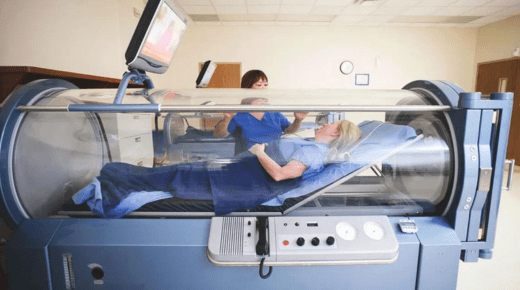1. Introduction to Hyperbaric Oxygen Therapy
Hyperbaric oxygen therapy (HBOT) is a medical treatment that involves breathing pure oxygen in a pressurized environment. This therapy is used to accelerate the body’s natural healing processes. By increasing the oxygen concentration in the blood, HBOT can enhance the body’s ability to repair tissues, fight infections, and improve overall health.
2. History and Development of HBOT
The origins of hyperbaric oxygen therapy date back to the 17th century. However, significant advancements were made in the 20th century when HBOT was used to treat decompression sickness in divers. Over the years, its applications have expanded, and it is now used for a variety of medical conditions.
3. The Science Behind HBOT
HBOT works by increasing the amount of oxygen your blood can carry. Under normal atmospheric pressure, red blood cells transport oxygen throughout the body. In a hyperbaric chamber, the pressure is increased, allowing oxygen to dissolve into all body fluids, including plasma, lymph, and cerebrospinal fluid, enhancing oxygen delivery to tissues.
4. Types of Hyperbaric Chambers
There are two main types of hyperbaric chambers: monoplace and multiplace. Monoplace chambers are designed for one person and are typically used in outpatient settings. Multiplace chambers can accommodate multiple patients and medical staff, making them suitable for hospitals and specialized clinics.
5. Indications for Hyperbaric Oxygen Therapy
HBOT is used to treat a variety of conditions. Some of the FDA-approved indications include decompression sickness, carbon monoxide poisoning, chronic non-healing wounds, radiation injury, and severe infections like necrotizing fasciitis. It is also being researched for its potential benefits in other medical conditions.
6. HBOT for Wound Healing
One of the most common uses of HBOT is for the treatment of chronic non-healing wounds, such as diabetic foot ulcers. By increasing oxygen supply to the affected area, HBOT promotes faster healing, reduces inflammation, and helps fight infection, which is crucial for patients with compromised healing abilities.
7. Treating Decompression Sickness with HBOT
Decompression sickness, also known as “the bends,” occurs when divers ascend too quickly, causing nitrogen bubbles to form in the blood. HBOT is the primary treatment for this condition, as it helps reduce the size of the bubbles and allows the body to absorb them safely.
8. HBOT for Carbon Monoxide Poisoning
Carbon monoxide poisoning is a life-threatening condition that requires immediate treatment. HBOT is highly effective in this scenario as it quickly removes carbon monoxide from the blood, restoring normal oxygen levels and preventing long-term damage to organs and tissues.
9. Radiation Injury and HBOT
Radiation therapy for cancer can sometimes cause damage to healthy tissues, leading to radiation injuries. HBOT has been shown to improve healing in these tissues by enhancing oxygen delivery and promoting new blood vessel formation, which helps repair the damage caused by radiation.
10. HBOT in Treating Severe Infections
Severe infections, such as necrotizing fasciitis, require prompt and aggressive treatment. HBOT can be an adjunctive therapy in these cases, as it enhances the effectiveness of antibiotics, reduces inflammation, and helps the body fight off infection more efficiently.
11. Benefits of HBOT in Traumatic Brain Injury
Research is ongoing into the use of HBOT for traumatic brain injury (TBI). Some studies suggest that increased oxygen levels in the brain can reduce swelling, improve blood flow, and promote the repair of damaged brain cells, offering hope for improved recovery in TBI patients.
12. HBOT for Stroke Recovery
Stroke recovery can be a long and challenging process. HBOT has been explored as a treatment to improve outcomes by enhancing oxygen delivery to the brain, promoting neuroplasticity, and aiding in the repair of damaged brain tissue. This can potentially speed up recovery and improve function.
13. Enhancing Athletic Performance with HBOT
Athletes sometimes use HBOT to enhance performance and accelerate recovery from injuries. By increasing oxygen availability, HBOT can reduce muscle fatigue, promote faster healing, and improve overall physical performance. However, its use in sports medicine is still being studied.
14. HBOT and Autism Spectrum Disorder
There is ongoing research into the use of HBOT for autism spectrum disorder (ASD). Some studies suggest that HBOT may improve cognitive function, social interaction, and communication in children with ASD. However, more research is needed to confirm these findings and establish treatment protocols.
15. HBOT for Chronic Fatigue Syndrome
Chronic fatigue syndrome (CFS) is a debilitating condition characterized by extreme tiredness. HBOT is being investigated as a potential treatment for CFS, with some studies indicating that increased oxygen levels can reduce symptoms, improve energy levels, and enhance overall well-being.
16. The Procedure of Hyperbaric Oxygen Therapy
During HBOT, the patient enters a hyperbaric chamber and breathes 100% oxygen. The treatment typically lasts between 60 to 90 minutes and may require multiple sessions depending on the condition being treated. Patients may experience a sensation similar to what is felt during an airplane ascent or descent.
17. Side Effects and Risks of HBOT
While HBOT is generally safe, it can have side effects. These may include ear pain or sinus pressure due to changes in pressure, temporary vision changes, and, in rare cases, oxygen toxicity. It is important for patients to be monitored by medical professionals during treatment.
18. Contraindications for HBOT
Not everyone is a suitable candidate for HBOT. Contraindications include certain lung diseases, untreated pneumothorax, and some types of chemotherapy drugs. It is essential for patients to undergo a thorough medical evaluation before starting HBOT to ensure it is safe for them.
19. Insurance Coverage for HBOT
Insurance coverage for HBOT can vary. Many insurance plans cover HBOT for FDA-approved indications, such as decompression sickness and chronic wounds. However, coverage for off-label uses may not be guaranteed and often requires pre-authorization and detailed medical documentation.
20. Future Directions in HBOT Research
The future of HBOT research looks promising. Scientists are exploring new applications, including its potential benefits for neurological disorders, autoimmune diseases, and even aging. As research progresses, HBOT may become a standard treatment for a wider range of conditions.
21. Personal Experiences with HBOT
Many patients have shared positive experiences with HBOT, reporting significant improvements in their conditions. Testimonials often highlight the relief from chronic pain, accelerated wound healing, and enhanced quality of life, providing hope to others considering this therapy.
22. Finding an HBOT Clinic
Finding a reputable HBOT clinic is crucial for safe and effective treatment. Patients should look for clinics with certified hyperbaric technicians and experienced medical staff. It is also important to verify the clinic’s credentials and ensure it follows established safety protocols.
23. Integrating HBOT with Other Treatments
HBOT is often used in conjunction with other treatments. For example, it can enhance the effectiveness of antibiotics for infections or improve outcomes when combined with physical therapy for injury recovery. An integrated approach can provide comprehensive care and better results.
24. Patient Preparation for HBOT
Before starting HBOT, patients should receive detailed instructions on how to prepare. This may include avoiding certain medications, refraining from smoking, and ensuring proper hydration. Following these guidelines can help minimize risks and enhance the effectiveness of the treatment.
25. Conclusion
Hyperbaric oxygen therapy is a versatile and effective treatment for a variety of medical conditions. With its ability to enhance the body’s natural healing processes, HBOT offers hope and improved outcomes for many patients. As research continues to uncover new applications, the potential benefits of HBOT are likely to expand, making it an invaluable tool in modern medicine.



